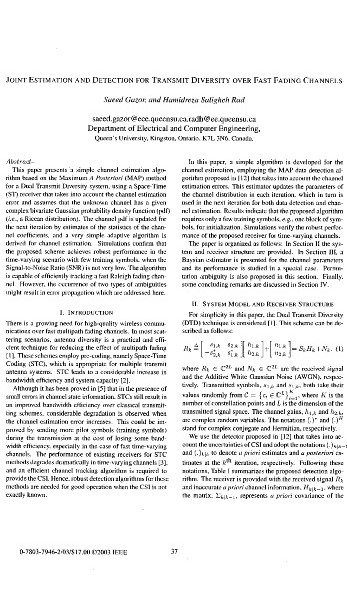Joint estimation and detection for transmit diversity over fast fading channels
Abstract
This paper presents a simple channel estimation algorithm based on the maximum a posteriori (MAP) method for a dual transmit diversity system, using a space-time (ST) receiver that takes into account the channel estimation error and assumes that the unknown channel has a given complex bivariate Gaussian probability density function (pdf) (i.e., a Ricean distribution). The channel pdf is updated for the next iteration by estimates of the statistics of the channel coefficients, and a very simple adaptive algorithm is derived for channel estimation. Simulations confirm that the proposed scheme achieves robust performance in the time-varying scenario with few training symbols, when the signal-to-noise ratio (SNR) is not very low. The algorithm is capable of efficiently tracking a fast Rayleigh fading channel. However, the occurrence of two types of ambiguities might result in error propagation which are addressed here.

